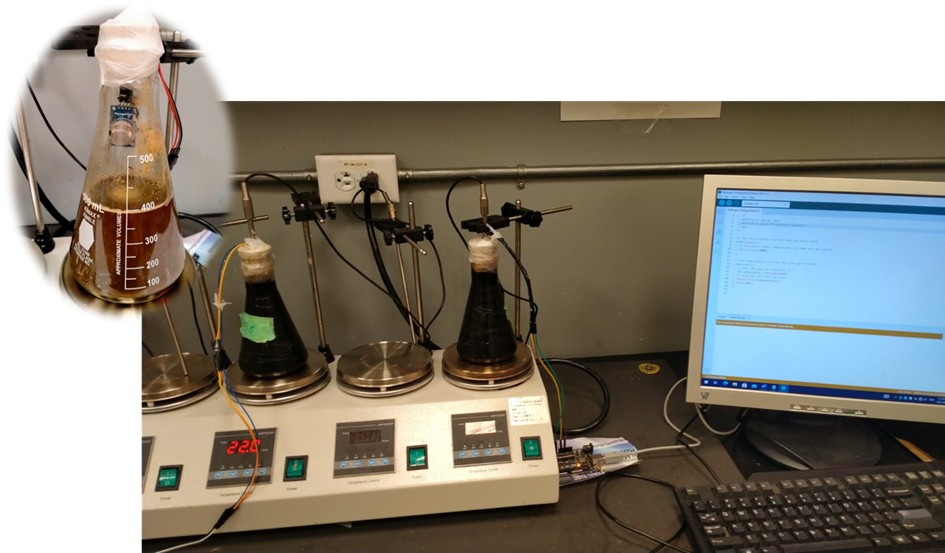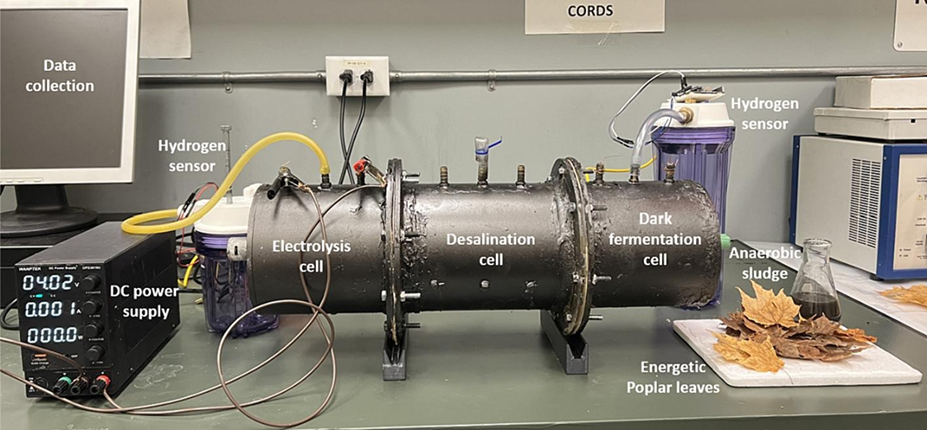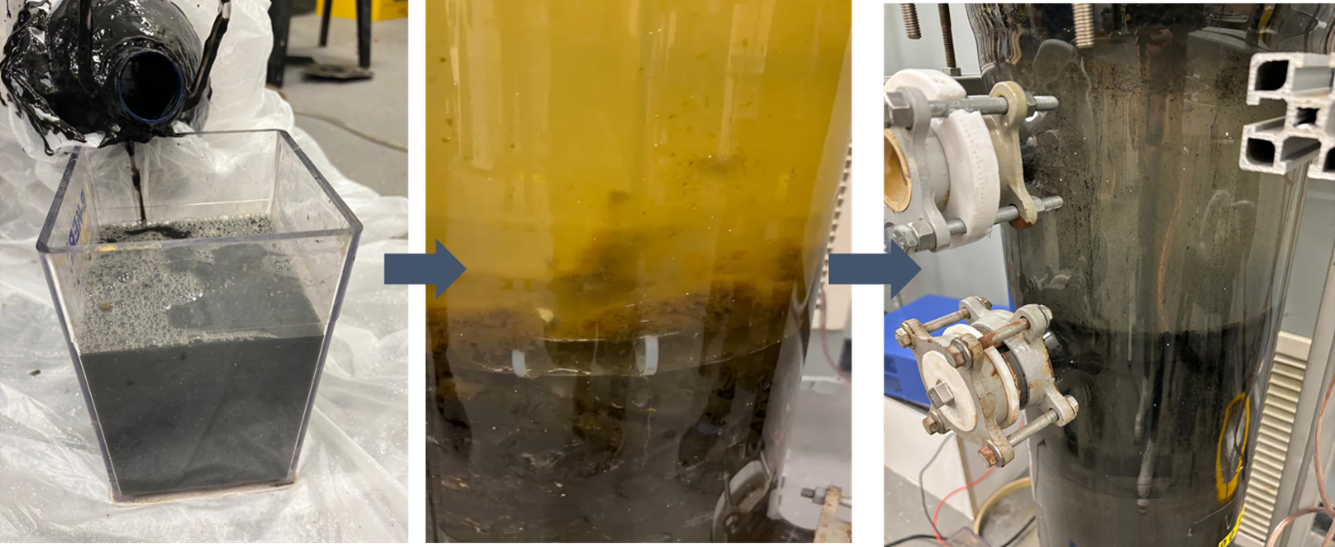Recent Works on Biohydrogen Production Systems
Biohydrogen (bioH2) production systems have gained significant interest as part of the global shift toward renewable energy sources. These systems utilize the biochemical activities of microorganisms to convert organic waste into hydrogen gas. Various bioH2 production methods exist, including photobiological, dark fermentative, and microbial electrolysis cells (MECs). Fermentative hydrogen production relies on the anaerobic degradation of organic matter by microorganisms, whereas photobiological processes use photosynthetic bacteria or algae to split water through photolysis. Meanwhile, MECs integrate microbial catalytic activity with electrolysis, combining bioenergy generation and hydrogen production in a highly efficient process.
The industrial feasibility of these systems depends on factors such as biomass feedstock type, energy efficiency, hydrogen production rate, and process stability. Compared to conventional electrolytic hydrogen production, bioH2 systems offer advantages such as lower energy requirements and enhanced environmental sustainability. However, optimizing process conditions to improve hydrogen purity, mitigate inhibitory compounds, and enhance system performance remains a critical challenge. Therefore, advanced bioH2 systems focus on improving electrode materials, engineering microbial consortia through genetic modification, and utilizing low-cost substrates such as wastewater to enhance overall efficiency. These innovations are essential for making bioH2 a commercially viable and scalable alternative to fossil fuel-derived hydrogen.
Dark Fermentation Process
Dark fermentation is an anaerobic biological process that produces hydrogen by degrading organic matter through microbial activity. This method utilizes fermentative bacteria to convert carbohydrates, such as glucose or complex organic waste, into hydrogen, volatile fatty acids, and other byproducts. Compared to other hydrogen production techniques, dark fermentation offers advantages such as operation at mild temperatures and pressures, the ability to use a wide range of organic substrates, and the potential for integrating waste treatment with biohydrogen production. However, challenges such as low hydrogen yield, byproduct formation, and the need for efficient microbial community management limit its large-scale application. Ongoing research focuses on optimizing operational parameters, improving microbial consortia, and integrating dark fermentation with complementary processes, such as photofermentation or microbial electrolysis, to enhance hydrogen yield and overall efficiency.

Electro-Biomembrane Reactor
The integrated bioelectrochemical reactor is a unique system that simultaneously facilitates microbial electrolysis for hydrogen production, conventional electrolysis for additional hydrogen production, and desalination through anion and cation exchange membranes. In this multi-chamber design, the anode chamber hosts electroactive microorganisms that oxidize organic matter, releasing electrons and protons, which drive hydrogen evolution at the cathode with the assistance of an applied voltage. Concurrently, conventional electrolysis enhances hydrogen production by utilizing excess energy within the system. The central desalination chamber, positioned between the anode and cathode, employs ion-exchange membranes to selectively transport anions and cations, effectively removing salts from saline or wastewater streams. This synergistic configuration not only maximizes hydrogen yield but also offers a sustainable approach to water treatment and resource recovery. Despite its advantages, challenges such as electrode material optimization, ion migration efficiency, and operational stability require further research to enhance system performance and scalability.

Cylindrical Microbial Electrolysis System
Microbial electrolysis cells (MECs) are bioelectrochemical systems that utilize electroactive microorganisms to produce hydrogen from organic matter under an applied voltage. In MECs, microbes in the anode chamber oxidize organic substrates, releasing electrons and protons. The electrons travel through an external circuit to the cathode, where they combine with protons to produce hydrogen gas. Compared to conventional electrolysis, MECs operate at lower voltage requirements due to the bioelectrochemical assistance, making them more energy-efficient. Additionally, MECs can utilize wastewater and biomass as feedstock, offering a sustainable approach to simultaneous hydrogen production and wastewater treatment. However, challenges such as high material costs, electrode stability, and system scalability hinder large-scale deployment. Research efforts focus on improving electrode materials, optimizing reactor configurations, and integrating renewable energy sources to enhance the efficiency and feasibility of MEC-based hydrogen production.